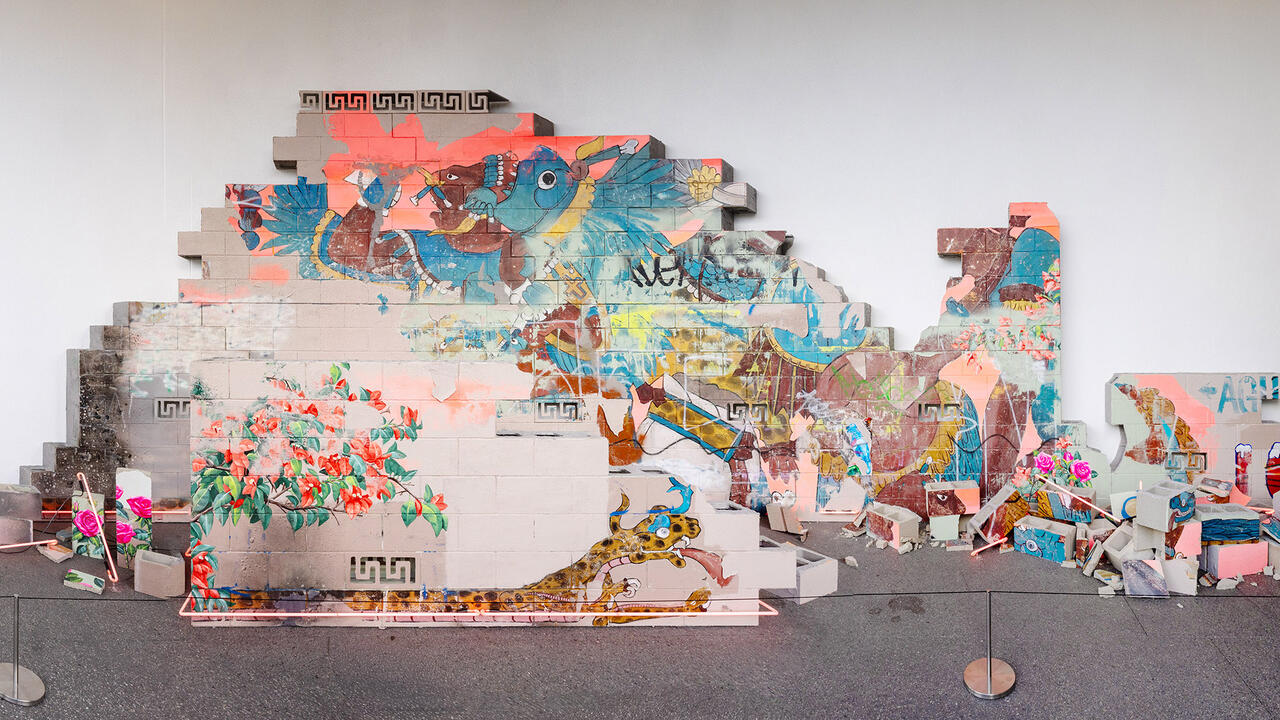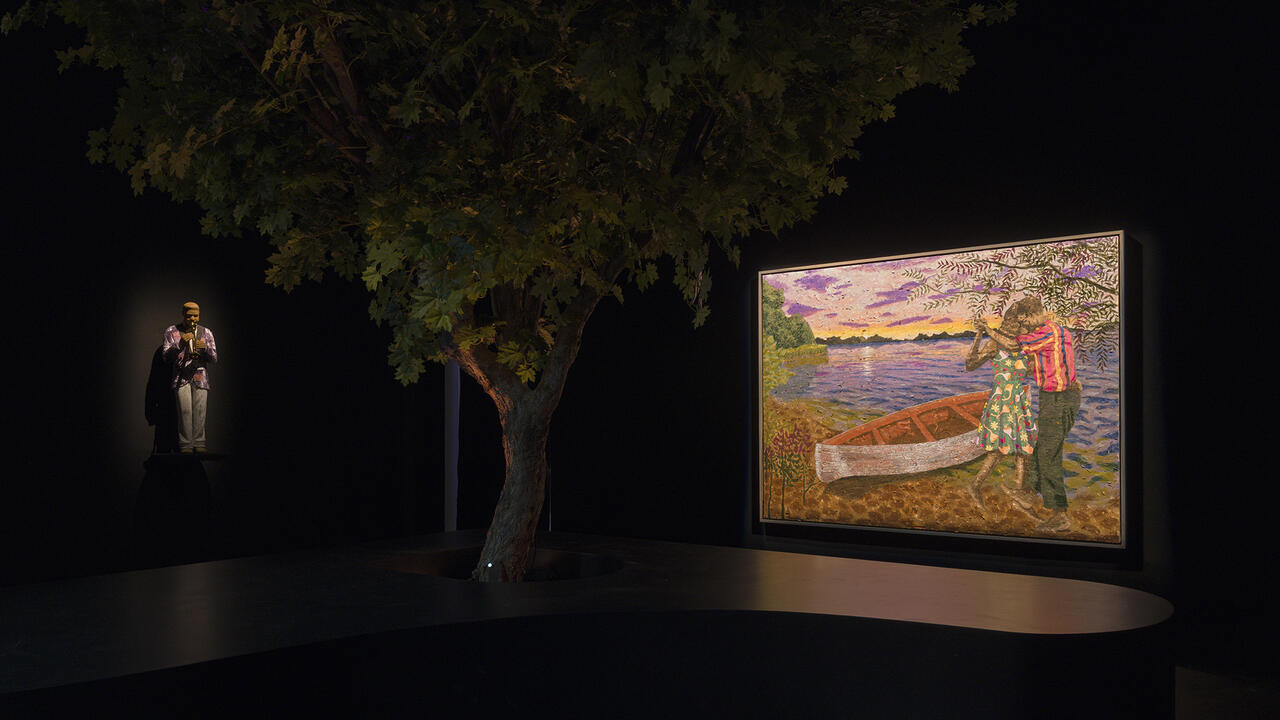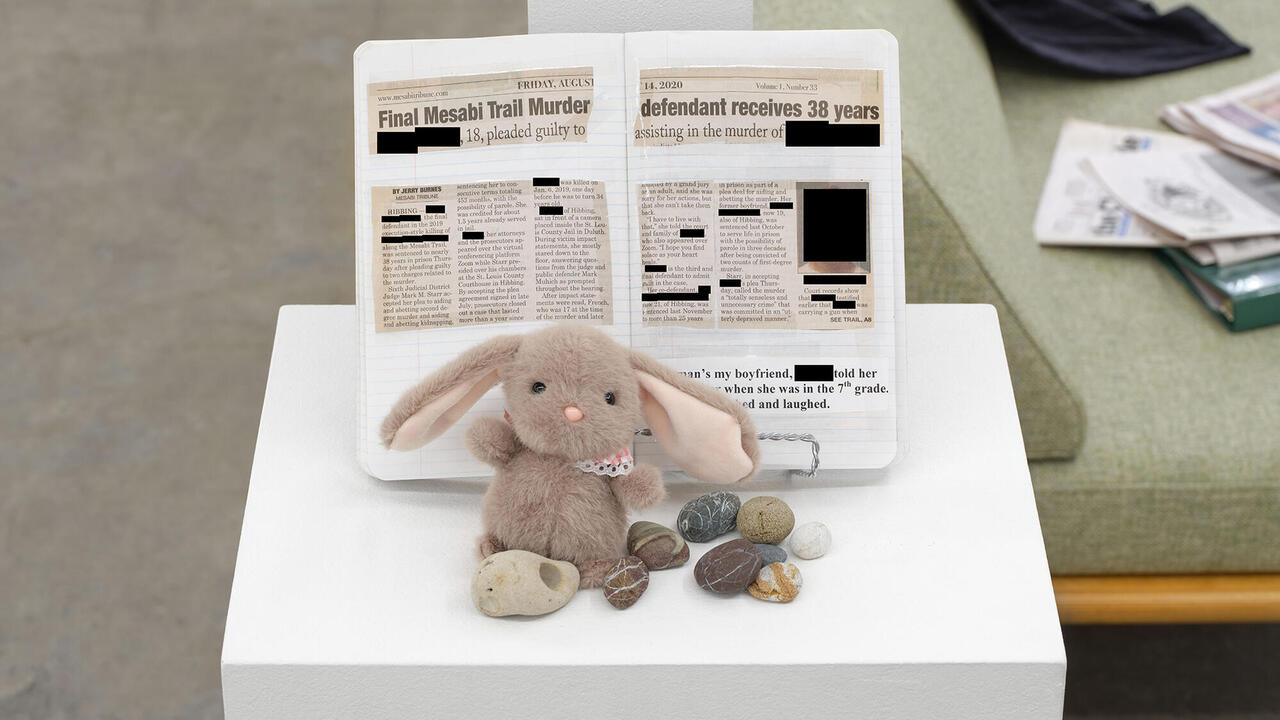Lari Pittman: Removing the Threads of Colonialism
An exhibition at Regen Projects, Los Angeles, sheds new light on colonialist patterns and projections
An exhibition at Regen Projects, Los Angeles, sheds new light on colonialist patterns and projections

Since he began exhibiting them in the early 1980s, Lari Pittman’s paintings have agitated for a principle of radical equivalency, a democratic (re)evaluation of all content as being equal in status (or, at least, potentially equal) once it manifests on the paper or canvas. In his exhibition ‘Portraits of Textiles & Portraits of Humans’, Pittman presents 12 pairs of paintings, one large and one small, one depicting an invented textile pattern and one an invented portrait. The show’s conceit, in crude terms, is that a portrait of a face and a design for a fabric are interchangeable – that a pattern can be a portrait and, inversely, a face can be a pattern, or an arrangement of patterns, in the broadest sense of that word.
While the ideas behind this body of work are consistent with everything Pittman has said and made in the past, the results are more focused, restrained even, compared to previous work. (His last solo show at Regen Projects, in 2013, was dominated by three, mural-like canvases more than nine metres wide.) The apparent modesty of ‘Portraits of Textiles & Portraits of Humans’ might make the exhibition easier to wrap one’s arms around, but it feels in no way like a narrow or unambitious project. These vinyl acrylic and sprayed enamel paintings are as technically phenomenal and as intellectually mischievous as ever. Today, Pittman – who is 67, and will be recognized with a retrospective at the Hammer Museum next autumn – is at the top of his game.

While the range of references and subject matter in these new paintings, as with all of his work, seems positively limitless – drawing on textiles from the 1951 ‘Festival of Britain’, African commemorative batiks, costume and stage designs for the Ballet Russes, amongst others – we are never permitted to stray far from consideration of Pittman’s own subject position. As a queer, biracial man (his mother was Colombian), he still operates from the perspective of the unprivileged outsider, despite his professional success and high standing within his community. Pittman takes whatever he can lay his hands on, and clearly feels that it is his right to do so. He belongs to a generation for whom appropriation was not such a fraught artistic issue as it is today, and an intersectional subset of that generation whose voice has historically been stifled by the mainstream.
Nevertheless, the exoticism in ‘Portraits of Textiles & Portraits of Humans’ – especially in the depictions of people – might give a latter-day viewer pause. Figures in bejewelled turbans, keffiyeh, headscarves or skullcaps, some with bindis and others with extravagant, twisted moustaches, overwhelmingly project a sense of otherness, even if it is hard to tell whether they hail from the Indian subcontinent or the Arabian Peninsula, the 1800s or the present day. Most appear to be men; all could be in drag. These despondent faces are colonialist projections – but are they Pittman’s projections or our own? One reading of the exhibition might revolve around the self-construction of marginal identity in the age of social media; another might interpret these faces not as autonomous affectations but as jerry-rigged amalgams of existing socio-cultural tropes (read: patterns).

These questions are clarified somewhat by their partner paintings, ‘portraits of textiles’ that feature not only blossoms and fruit but also daggers, hatchets, moneybags and snakes.Violence and venality are woven into decorative designs that are actually representations of societal and personal angst, as well as evocations of specific materials. In Portrait of a Textile (Damask) (all works 2018), nooses encircle, upsettingly, fantastical old houses. Its pendant, Portrait of a Human (Pathos, Ethos, Logos, Kairos #14) shows a turbaned head grandly attired in swatches of tartan – a citizen, perhaps, of Damascus by way of the Scottish Highlands. The violent legacies of colonialism, Pittman implies, are insidiously entwined with how we conceive of class, gender and sexual identity – both our own and that of others.
Lari Pittman, 'Portraits of Textiles & Portraits of Humans' was on view at Regen Projects, Los Angeles, from 15 September until 25 October 2018.
Main image: Lari Pittman, 'Portraits of Textiles & Portraits of Humans', 2018, installation view. Courtesy: the artist and Regen Projects, Los Angeles; photograph: Brian Forrest























